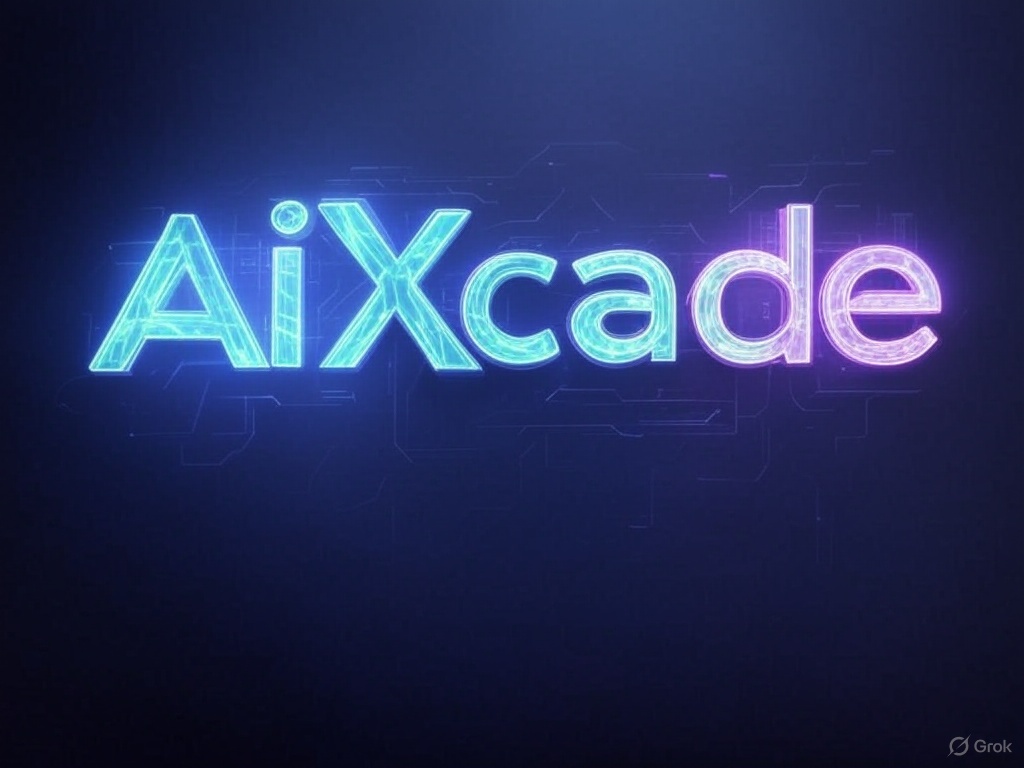Welcome to AIxCade
Your Arcade for AI Projects
The Future of Arcade Gaming
Step into AIxCade, where classic arcade thrills meet cutting-edge AI innovation. We’re not just about nostalgia—we’re reimagining gaming with artificial intelligence to create experiences that learn, adapt, and challenge like never before.
"AI isn’t just playing the game—it’s designing the next level." — AIxCade Team
AI-Powered Gameplay
Imagine Pac-Man that predicts your moves, or Space Invaders where the aliens evolve strategies against you. AIxCade harnesses machine learning to:
- Generate dynamic levels based on player skill.
- Adapt enemy behavior in real-time.
- Offer personalized challenges—no two games are the same!
Our AI doesn’t just play—it creates, pushing arcade gaming into uncharted territory.
Arcade Legends, AI-Enhanced
From Galaga to Street Fighter, we’re reviving the classics with AI twists. Picture this: a Donkey Kong where barrels roll smarter, or a Tetris that suggests optimal drops—AIxCade blends retro charm with futuristic flair.
Featured Classics
| Name | Company | Publish Date | Description |
|---|---|---|---|
| Pac-Man | Namco | May 22, 1980 | Gobble pellets and dodge ghosts—now with AI that learns your patterns. |
| Space Invaders | Taito | June 1978 | Blast descending aliens, enhanced with adaptive enemy tactics. |
| Galaga | Namco | September 1981 | Fight waves of ships—AI now upgrades their formations. |
A Bite of Pac-Man History
Pac-Man debuted on May 22, 1980, in Japan, crafted by Namco’s Toru Iwatani. Inspired by a pizza with a slice missing, this yellow gobbler became an instant hit, selling over 100,000 arcade cabinets in its first year alone. Unlike the shoot-’em-ups dominating the era, Pac-Man’s maze-chasing simplicity—eat pellets, avoid ghosts—captured a broader audience, including women, making it a cultural icon that still echoes in gaming today.
The four ghosts—Blinky (red), Pinky (pink), Inky (cyan), and Clyde (orange)—each had distinct “personalities” coded into their AI. Blinky pursues relentlessly, Pinky ambushes by predicting your path, Inky mixes strategies based on Blinky’s position, and Clyde wanders chaotically until you’re close, then bolts. This basic AI, driven by simple rules, gave the game its charm but left room for predictability—veteran players could memorize patterns to outsmart them every time.
Modern AI could turbocharge these ghosts. Imagine Blinky using reinforcement learning to adapt to your dodging habits, or Pinky analyzing heatmaps of your past moves to set deadlier traps. Inky could leverage neural networks to blend aggression and evasion dynamically, while Clyde’s randomness could shift into a chaos algorithm that keeps you guessing. At AIxCade, we’re exploring how machine learning can turn these retro foes into unpredictable, evolving adversaries, breathing new life into a 40-year-old classic.
AIxCade Game Showcase (CSS Grid)
Tetris: The Block-Dropping Revolution
Tetris, born in 1984 by Alexey Pajitnov in the Soviet Union, redefined gaming with its elegant simplicity—fit falling blocks into lines to clear them. Its addictive puzzle mechanics made it a global phenomenon, selling over 500 million copies across platforms. Beyond arcades, Tetris shaped casual gaming, proving that brain-teasing challenges could rival action-packed titles, influencing everything from mobile games to modern match-3 crazes.
When Nintendo launched the Game Boy in 1989, they consciously picked Tetris as the killer app over Super Mario Bros.. Why? Tetris’s universal appeal—easy to learn, hard to master—targeted a wider audience, from kids to adults, unlike Mario’s platformer niche. Bundled with every Game Boy, it sold over 35 million units, turning a handheld into a cultural juggernaut. Nintendo knew Tetris’s endless replayability would hook players, cementing the Game Boy’s dominance.
At AIxCade, we’re enhancing Tetris with AI flair. Picture a version where the game predicts your next move and adjusts block drops to keep you on edge, or offers real-time hints via machine learning—turning a solo puzzle into a dynamic duel against an intelligent system. It’s Tetris, evolved for the AI age.
Join the AIxCade Revolution
Ready to play? Dive into our projects or submit your own AI ideas. At AIxCade, gaming’s future is yours to shape.
